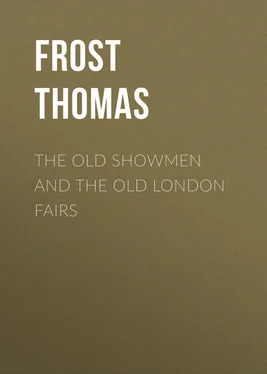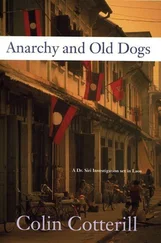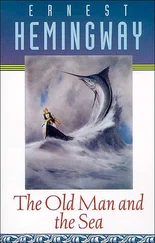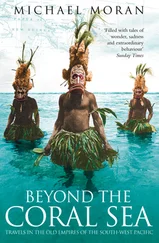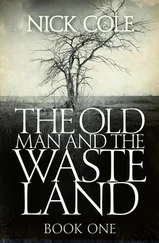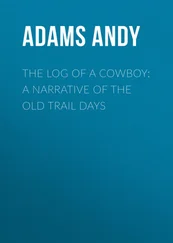Thomas Frost - The Old Showmen and the Old London Fairs
Здесь есть возможность читать онлайн «Thomas Frost - The Old Showmen and the Old London Fairs» — ознакомительный отрывок электронной книги совершенно бесплатно, а после прочтения отрывка купить полную версию. В некоторых случаях можно слушать аудио, скачать через торрент в формате fb2 и присутствует краткое содержание. Жанр: foreign_antique, foreign_prose, на английском языке. Описание произведения, (предисловие) а так же отзывы посетителей доступны на портале библиотеки ЛибКат.
- Название:The Old Showmen and the Old London Fairs
- Автор:
- Жанр:
- Год:неизвестен
- ISBN:нет данных
- Рейтинг книги:4 / 5. Голосов: 1
-
Избранное:Добавить в избранное
- Отзывы:
-
Ваша оценка:
- 80
- 1
- 2
- 3
- 4
- 5
The Old Showmen and the Old London Fairs: краткое содержание, описание и аннотация
Предлагаем к чтению аннотацию, описание, краткое содержание или предисловие (зависит от того, что написал сам автор книги «The Old Showmen and the Old London Fairs»). Если вы не нашли необходимую информацию о книге — напишите в комментариях, мы постараемся отыскать её.
The Old Showmen and the Old London Fairs — читать онлайн ознакомительный отрывок
Ниже представлен текст книги, разбитый по страницам. Система сохранения места последней прочитанной страницы, позволяет с удобством читать онлайн бесплатно книгу «The Old Showmen and the Old London Fairs», без необходимости каждый раз заново искать на чём Вы остановились. Поставьте закладку, и сможете в любой момент перейти на страницу, на которой закончили чтение.
Интервал:
Закладка:
Three years later, two other entries are made, concerning shows which he witnessed. First we have, “June 18th. At Greenwich I saw a sort of cat, brought from the East Indies, shaped and snouted much like the Egyptian racoon, in the body like a monkey, and so footed; the ears and tail like a cat, only the tail much longer, and the skin variously ringed with black and white; with the tail it wound up its body like a serpent, and so got up into trees, and with it wrap its whole body round. Its hair was woolly like a lamb; it was exceedingly nimble, gentle, and purred as does the cat.” This animal was probably a monkey of the species called by Cuvier, the toque; it is a native of the western regions of India, and one of the most amusing, as well as the most common, of the simial tenants of modern menageries.
“August 15th. Going to London with some company, we stept in to see a famous rope-dancer, called The Turk . I saw even to astonishment the agility with which he performed; he walked barefooted, taking hold by his toes only of a rope almost perpendicular, and without so much as touching it with his hands; he danced blindfold on the high rope, and with a boy of twelve years old tied to one of his feet about twenty feet beneath him, dangling as he danced, yet he moved as nimbly as if it had been but a feather. Lastly he stood on his head, on the top of a very high mast, danced on a small rope that was very slack, and finally flew down the perpendicular on his breast, his head foremost, his legs and arms extended, with divers other activities.
“I saw the hairy woman, twenty years old, whom I had before seen when a child. She was born at Augsburg, in Germany. Her very eyebrows were combed upwards, and all her forehead as thick and even as grows on any woman’s head, neatly dressed; a very long lock of hair out of each ear; she had also a most prolix beard, and moustachios, with long locks growing on the middle of her nose, like an Iceland dog exactly, the colour of a bright brown, fine as well-dressed flax. She was now married, and told me she had one child that was not hairy, nor were any of her parents or relations. She was very well shaped, and played well on the harpsichord.”
This extraordinary creature must have been more than twenty years of age when Evelyn saw her, for the engraved portrait described by Granger bears the following inscription: – “Barbara Vanbeck, wife to Michael Vanbeck, born at Augsburg, in High Germany; daughter of Balthasar and Anne Ursler. Aged 29. A.D. 1651. R. Gaywood f. London.”
Another engraved portrait, in the collection of the Earl of Bute, represents her playing the harpsichord, and has a Dutch inscription, with the words – “Isaac Brunn delin. et sc. 1653.” One of Gaywood’s prints, which, in Granger’s time, was in the possession of Fredericks, the bookseller, at Bath, had the following memorandum written under the inscription: – “This woman I saw in Ratcliffe Highway in 1668, and was satisfied she was a woman. John Bulfinch.” Granger describes her from the portraits, as follows: – “The face and hands of this woman are represented hairy all over. Her aspect resembles that of a monkey. She has a very long and large spreading beard, the hair of which hangs loose and flowing like the hair of the head. She is playing on the organ. Vanbeck married this frightful creature on purpose to carry her about for a show.”
CHAPTER III
Strolling Players in the Seventeenth Century – Southwark Fair – Bartholomew Fair – Pepys and the Monkeys – Polichinello – Jacob Hall, the Rope-Dancer – Another Bearded Woman – Richardson, the Fire-Eater – The Cheshire Dwarf – Killigrew and the Strollers – Fair on the Thames – The Irish Giant – A Dutch Rope-Dancer – Music Booths – Joseph Clark, the Posturer – William Philips, the Zany – William Stokes, the Vaulter – A Show in Threadneedle Street.
The period of the Protectorate was one of suffering and depression for the entertaining classes, who were driven into obscure taverns and back streets by the severity with which the anti-recreation edicts of the Long Parliament were enforced, and even then were in constant danger of Bridewell and the whipping-post. Performances took place occasionally at the Red Bull theatre, in St. John Street, West Smithfield, when the actors were able to bribe the subordinate officials at Whitehall to connive at the infraction of the law; but sometimes the fact became known to some higher authority who had not been bribed, or whose connivance could not be procured, and then the performance was interrupted by a party of soldiers, and the actors marched off to Bridewell, where they might esteem themselves fortunate if they escaped a whipping as well as a month’s imprisonment as idle vagabonds.
Unable to exercise their vocation in London, the actors travelled into the country, and gave dramatic performances in barns and at fairs, in places where the rigour of the law was diminished, or the edicts rendered of no avail, by the magistrates’ want of sympathy with the pleasure-abolishing mania, and the readiness of the majority of the inhabitants to assist at violations of the Acts. In one of his wanderings about the country, Cox, the comedian, shod a horse with so much dexterity, in the drama that was being represented, that the village blacksmith offered him employment in his forge at a rate of remuneration exceeding by a shilling a week the ordinary wages of the craft. The story is a good illustration of the realistic tendencies of the theatre two hundred years ago, especially as the practice which then prevailed of apprenticeship to the stage renders it improbable that Cox had ever learned the art of shoeing a horse with a view to practising it as a craftsman.
The provincial perambulations of actors did not, however, owe their beginning to the edicts of the Long Parliament, there being evidence that companies of strolling players existed contemporaneously with the theatres in which Burbage played Richard III. and Shakespeare the Ghost in Hamlet . In a prologue which was written for some London apprentices when they played The Hog hath lost his Pearl in 1614, their want of skill in acting and elocution is honestly admitted in the following lines —
“We are not half so skilled as strolling players,
Who could not please here as at country fairs.”
In the household book of the Clifford family, quoted by Dr. Whitaker in his ‘History of Craven,’ there is an entry in 1633 of the payment of one pound to “certain itinerant players,” who seem to have given a private representation, for which they were thus munificently remunerated; and two years later, an entry occurs of the payment of the same amount to “a certain company of roguish players who represented A New Way to pay Old Debts ,” the adjective being used, probably to distinguish this company, as being unlicensed or unrecognized, from the strolling players who had permission to call themselves by the name of some nobleman, and to wear his livery. The Earl of Leicester maintained such a company, and several other nobles of that period did the same, the actors being known as my Lord Leicester’s company, or as the case might be, and being allowed to perform elsewhere when their services were not required by their patron.
The depressed condition of actors at this period is amusingly illustrated by the story of Griffin and Goodman occupying the same chamber, and having but one decent shirt between them, which they wore in turn, – a destitution of linen surpassed only by that which is said to have characterised the ragged regiment of Sir John Falstaff, who had only half a shirt among them all. The single shirt of the two actors was the occasion of a quarrel and a separation between them, one of the twain having worn it out of his turn, under the temptation of an assignation with a lady. What became of the shirt upon the separation of their respective interests in it, we are not told.
Читать дальшеИнтервал:
Закладка:
Похожие книги на «The Old Showmen and the Old London Fairs»
Представляем Вашему вниманию похожие книги на «The Old Showmen and the Old London Fairs» списком для выбора. Мы отобрали схожую по названию и смыслу литературу в надежде предоставить читателям больше вариантов отыскать новые, интересные, ещё непрочитанные произведения.
Обсуждение, отзывы о книге «The Old Showmen and the Old London Fairs» и просто собственные мнения читателей. Оставьте ваши комментарии, напишите, что Вы думаете о произведении, его смысле или главных героях. Укажите что конкретно понравилось, а что нет, и почему Вы так считаете.
